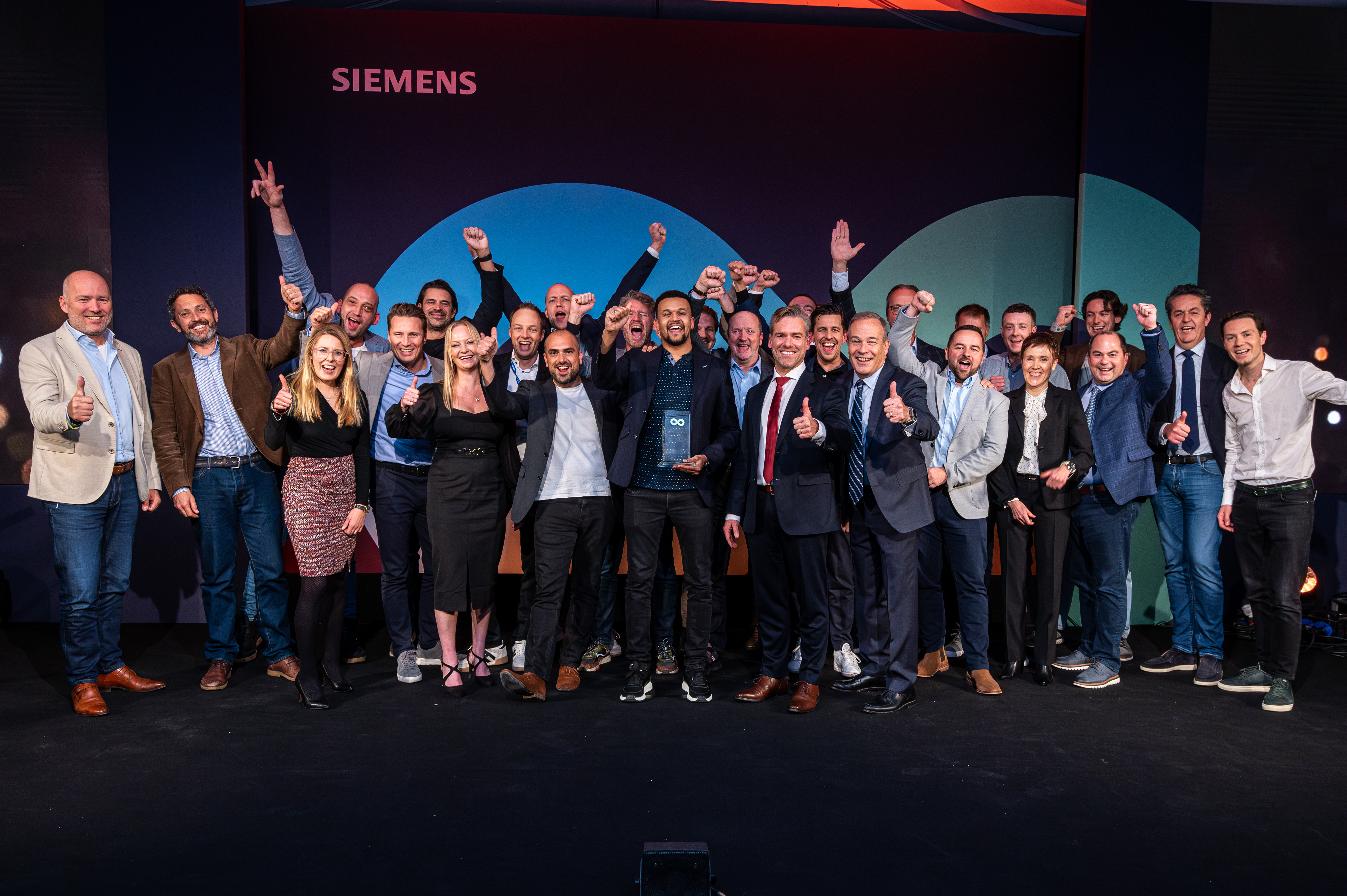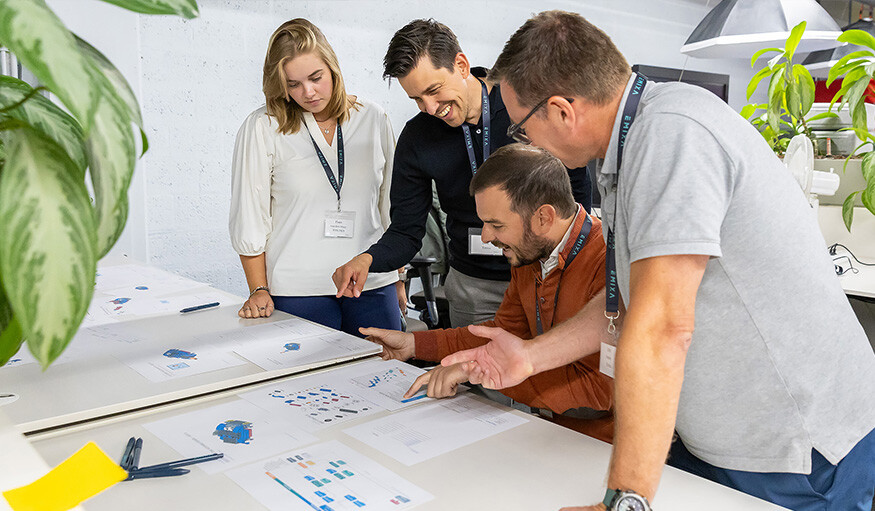News & Blogs
Stay updated with the latest news, insights, and expert blogs from Emixa. Explore industry trends, digital innovations, and company updates all in one place.

- Mendix
YALA Streamlines and Enhances Delivery Process with a New Application
An increasing number of holidaymakers seek an experience that combines the best of both worlds: being close to nature and enjoying the outdoors without compromising on comfort—Glamping. YALA provides unique and versatile canvas lodges, glamping tents, and safari tents that create this experience. YALA's luxurious tents can be fully customized with interior, sanitation, and heating according to preferences. This extends the outdoor season for holiday parks or campsites and increases occupancy rates.

- Mendix
How to Download the Brain of Your Best Operator?
You've probably noticed that the average age of production workers is increasing, and retirement is approaching sooner. This has a few, but crucial, implications for the industry. What happens to valuable knowledge? In this blog, we'll share more about what you can do to address this issue.

- SAP
- Mendix
LMtec Digital Solutions Joins Forces with Emixa
Emixa, the leading SAP/Siemens/Mendix technology partner, is investing in LMtec Digital Solutions, with support from Holland Capital. With this partnership, Emixa expands its presence into the DACH region and further enhances its product and service offerings, accelerating the digital transformation of its international Industry 4.0 clients. Collaboration LMtec Digital Solutions is a leading partner of Siemens Digital Industries Software with offices in Germany and Switzerland, specialized in providing PLM (Product Lifecycle Management) solutions, including maintenance, technical support, and consultancy. This partnership contributes to their vision of playing a significant role in the digital transformation of the manufacturing industry, also known as ‘Industry 4.0’, through technologies such as Siemens, SAP, and Mendix. Furthermore, this collaboration offers its employees opportunities for international development within the wide range of services, technologies, and countries where the group operates. Expansion into DACH region The acquisition of LMtec Digital Solutions is the next step in Emixa’s expansion strategy. Including LMtec, Emixa now employs over 520 professionals, focusing on product lifecycle and asset management, IT architecture, low-code applications, system integrations, and process optimization, primarily targeting the manufacturing industry. The group aspires to become the leading player in Western Europe, and has now expanded its operations to the DACH region, in addition to the Benelux and the United Kingdom. Peter-Jan Simons, CEO of Emixa, commented, "LMtec is a strategic addition to our group, bringing high-level expertise in digital transformation to the modern industry. I am very excited about this addition, as together with LMtec, we can mutually now better serve our customers in the DACH region within the technology triangle of SAPSiemens-Mendix. Additionally, our consultants will have more international career opportunities. LMtec's Siemens PLM expertise will boost our Siemens activities in Europe and elevate our partnership with Siemens to a higher level." Peter Wassmer, Managing Partner of LMtec Digital Solutions, stated, "Siemens recognizes Emixa as a leading specialist capable of delivering solutions based on SAP/Siemens/Mendix technology. Joining forces with Emixa is the perfect combination to realize our existing vision: to act as a trusted digital coach for our clients in addressing their digital thread for product and production." About LMtec Digital Solutions LMtec, founded in 2014, provides digital transformation consultancy, architecture, and implementation of PLM solutions, licenses, and IT services across all industrial sectors. With a team of more than 70 experts in Central Europe, its mission is to enable valued customers to innovate and bring better products and services to the market more quickly. They achieve leading innovation through in-depth industry knowledge, PLM best practices, unique processes, and technological skills. LMtec is a Smart Expert Partner of Siemens Digital Industries Software, SAP and Mendix in the DACH region. About Emixa Emixa offers its clients innovative, high-quality, full-service solutions in the field of digital transformation, with a special emphasis on the manufacturing industry, also known as 'Industry 4.0,' using Siemens (PLM), SAP (ERP), Mendix (Low Code Applications), and other leading technologies. The group operates in the Benelux, the United Kingdom, Ireland, Germany, and Switzerland. The foundation for Emixa was established in 2022 when the companies Appronto, cards PLM Solutions, Dimensys, Magnus, and OnePLM joined forces with the support of Holland Capital. More information Would you like to know more about Emixa? And are you curious about our solutions that allow you to speed up your digital transformation? Then don’t hesitate to contact us. We would be delighted to meet you!

- Low Code
Low-code in Manufacturing
Low-code platforms, such as Mendix, ensure faster and more advanced application development. These applications shorten the lost time that has to be used and processes in your company that arise from underlying standard applications do not cover the need. Applications are developed very quickly, and fully customized and function in the application landscape, so that you can start improving and accelerating your processes and production in no time.

- Siemens
Emixa Shines at Siemens EMEA Partner Summit 2025
Emixa has been recognised for its outstanding contributions to digital transformation at the Siemens EMEA Partner Summit 2025 in London. The company secured multiple prestigious awards, highlighting its leadership in Product Lifecycle Management (PLM), Software-as-a-Service (SaaS) adoption, and sales excellence.

- Digital Twin
How the CM2 Game teaches the true value of Configuration Management
What is Configuration Management, and why is it so important? How the CM2 Game teaches the true value of Configuration Management

- Management Consulting
- Consumer products & retail
- +1
From Warehouse to Doorstep: A Conversation on Last Mile Optimisation
The final delivery step to the customer, the ‘Last Mile,’ may seem simple. However, it is often one of the largest cost drivers for retailers, especially when dealing with large or fragile products. Why does this part of logistics remain such a challenge? And how can companies reduce these costs? Today, we’re speaking with consultant Jason Bos, who has experience improving the 'Last Mile'. He shares how smart adjustments and AI not only have the potential to lead to cost savings but also contribute to a more sustainable future.

- Management Consulting
- Consumer products & retail
- +1
Six Steps to Scaling New Business Models
Consultancy, the platform for the consulting industry, reports on the outcomes of the ShoppingTomorrow research program. How can retailers & consumer products scale up new business models?

- Data Analytics
- Data Management
Process Optimization in Service and Maintenance with Process Mining
Do you also notice that cooperation in the entire chain of service and maintenance processes is complex? Asset-intensive companies often have to deal with many different chain partners who are involved in both service and maintenance. They all need to communicate with each other. But how do you optimize all these internal and external processes? This starts with the right insight. And that is exactly where Process Mining offers the solution.